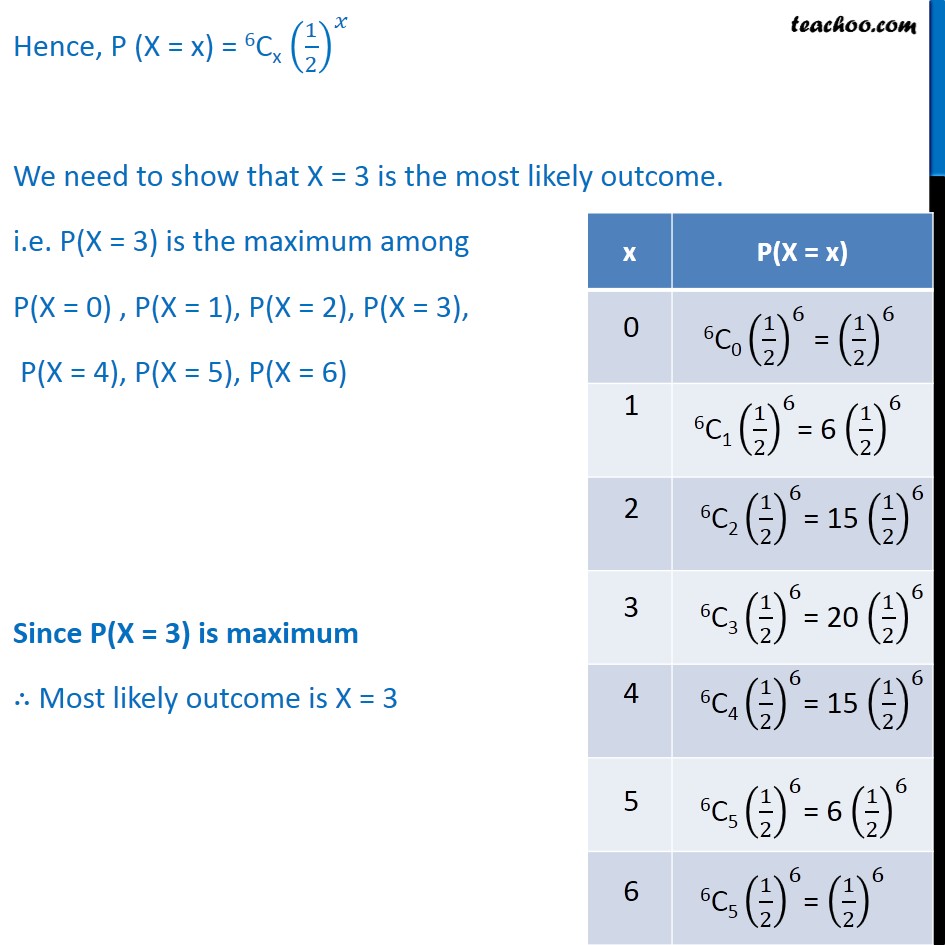

Last updated at Dec. 16, 2024 by Teachoo


Transcript
Question 8 Suppose X has a binomial distribution B (6, 12) . Show that X = 3 is the most likely outcome. (Hint : P(X = 3) is the maximum among all P(xi), xi = 0,1,2,3,4,5,6) B(6, 12) means Here , n = 6, p = 𝟏𝟐 So , q = 1 − 12 = 12 Hence, P (X = x) = 6Cx 12𝑥 126−𝑥 P (X = x) = 6Cx 12𝑥 + 6 − 𝑥 P (X = x) = 6Cx 𝟏𝟐𝒙 Hence, P (X = x) = 6Cx 12𝑥 We need to show that X = 3 is the most likely outcome. i.e. P(X = 3) is the maximum among P(X = 0) , P(X = 1), P(X = 2), P(X = 3), P(X = 4), P(X = 5), P(X = 6) Since P(X = 3) is maximum ∴ Most likely outcome is X = 3